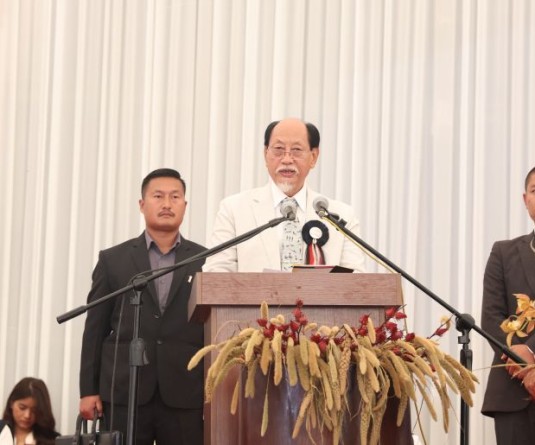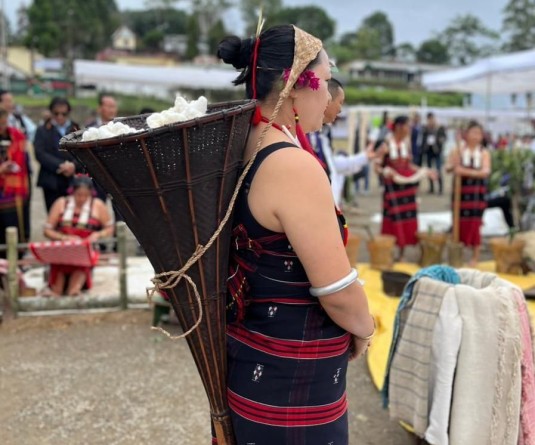
The recent proliferation of fear associated with vaccination in Nagaland is not a new phenomenon but has global historical precedent. The Morung Express delves into some of the issues surrounding the anti-vaccination movement
Morung Express News
Dimapur | October 3
The recent proliferation of fear associated with vaccination in Nagaland is not a new phenomenon. But this has reportedly affected the turnout to the state-wide Measles and Rubella Vaccination Campaign (MRVC) launched on October 3.
Rumours and fake news saw considerable spikes in Nagaland in the run-up to the launch of the official campaign.
Videos (fake) about adverse effects were shared on various social media platforms, while an organisation called ‘Citizens Believers Movement’ comprising of many Christian religious leaders wrote an article titled “Who in the medical world will speak up for the children?” in local dailies, asking “medical fraternity here in Nagaland to speak up.” A prayer centre reportedly issued a prophecy.
The Hindustan Times reported in May this year that fake alerts, which included texts, audio and video clips, claiming that the vaccine is “unsafe, first surfaced when India launched one of the world’s largest vaccination campaigns against measles and rubella on February 5, 2017, in Tamil Nadu, Karnataka, Puducherry, Lakshwadeep and Goa.”
However, it has global historical precedent, tracing back to anti-vaccination movements in Europe during the 1700s. It is mostly driven by rumours and fake news. These movements emerged out of distrust in vaccines as there was no official quarantine procedure for those who had already been inoculated. This was compounded by the nascent standards of 18th-century medicine.
Medical knowledge and standards, however, have progressed greatly since then and today’s vaccinations, according to health bodies like the World Health Organisation (WHO) and the Centre for Disease Control (CDS), are a “safe and effective tool in battling global health issues such as measles and rubella.”
Modern anti-vaccination propaganda rise out of religious and philosophical objections; some see mandatory vaccination as interference by the government into personal choice, and others are concerned about the safety or efficacy of vaccines.
The following points provide information courtesy of the WHO and the Nagaland State Department of Health and Family Welfare, to help people make an informed choice:
Is the MR vaccine safe?
The vaccine is safe and effective and has been in use for over 40 years in many countries. Regarding the composition of the vaccine, Dr Kevichusa Medikhru, Mission Director, NHM wrote in an article recently.
Debunking the concern over thiomersal, he pointed out that is no evidence to suggest “that the amount of thiomersal used in vaccines poses a health risk.”
State Immunization Officer Dr Atoshe Sema also requested public not to believe the rumours doing the round in the social media recently.
Why vaccination?
There are two sides to this question—whether vaccines are required as improved healthcare and sanitation have reduced diseases and most vaccine-preventable diseases have been virtually eliminated.
In response to the first, the WHO, in an article ‘Six common misconceptions about immunization’ cited cases of Measles, Haemophilus Influenzae type b (Hib disease), and Whooping Cough, where despite periodic high and low periods in incidences, the real permanent drop rates of these diseases coincided with mass use of vaccines.
Good hygiene, sanitation, clean water and nutrition are insufficient for stopping infectious diseases, added Dr Medikhru wrote.
The WHO further gave examples of countries like Great Britain, Sweden and Japan who cut back the use of pertussis (whooping cough) resulting in dramatic and immediate effects.
In Great Britain, a drop in pertussis vaccination in 1974 was followed by an epidemic of more than 100,000 cases of pertussis and 36 deaths by 1978. In Japan, drop in vaccination rates led to a jump in pertussis from 393 cases and no deaths in 1974 to 13,000 cases and 41 deaths in 1979. In Sweden, the annual incidence rate of pertussis per 100,000 children of 0-6 years of age increased from 700 cases in 1981 to 3,200 in 1985.
To the second question, the WHO said that vaccination serves two purposes—to protect oneself and the second to protect those around us. “Vaccinating ourselves is the only way to protect the small number of people who cannot be vaccinated (because of severe allergies to vaccine components, for example), and a small percentage of people who don't respond to vaccines,” it maintained.
Risks to Benefit Ratio
This relates to the argument that vaccines cause many harmful side effects, illnesses, and even death. Regarding this, Dr Medikhru stated that most vaccine reactions are usually minor and temporary, such as a sore arm or mild fever.
A pamphlet distributed at recent media sensitization workshop on MCVR organised by the state’s medical department, UNICEF and WHO representatives, informed that MR vaccine is very safe and does not cause any severe side effects.
“The children will be vaccinated by a trained health worker,” it stated and appealed parents to bring their children for vaccination.
The WHO, meanwhile pointed out that most vaccine adverse events can often be controlled by taking paracetamol after vaccination.
By choosing not to vaccinate, one not only continues to be susceptible to the infection but also remains as a potential threat, of transmitting the infection to other people, the Indian Academy of Pediatrics (IAP), Nagaland asserted in a statement ‘Issued in Public interest.’
Link with Autism retracted
Anti-vaccination literature constantly cites a paper published in 1998 in The Lancet journal which claimed a link between MMR vaccination and Autism.
Dr Medikhru pointed out that the paper was later found to be seriously flawed and fraudulent. The paper was retracted by the journal in 2010 as there has been no scientific evidence of a link between the vaccine and Autism or Autistic disorders.
Transparency and Big Pharma
Another concern involves the legitimate fear that big pharmaceutical companies in cahoots with the state employ these vaccination campaigns for profit.
Providing some transparency on the MMR vaccine, Dr Medikhru informed that the vaccine administered in the current campaign is produced in India and has been licensed by the Central Drugs Standard Control Organization (India). A majority of the global MR vaccines supplies are from India.
He further stated that the syringes and needles used in the campaign come in sterile packaging and are auto-disable, which cannot be reused.
The WHO, meanwhile, advised health care providers not to browbeat parents into vaccinating but to make sure they have accurate information to make informed choices.
Why multiple vaccines?
According to the WHO, a number of studies and reviews shows that recommended vaccines are as effective in combination as they are individually, and those combinations carry no greater risk for adverse side effects.
Research is also underway to find ways to combine more antigens in a single vaccine injection (for example, measles, mumps, rubella (MMR) and chickenpox). This will provide all the advantages of the individual vaccines, but will require fewer shots, the WHO added.





